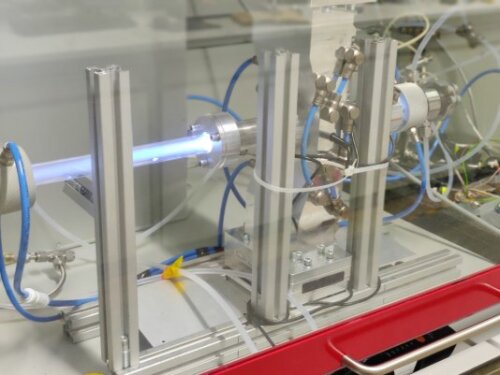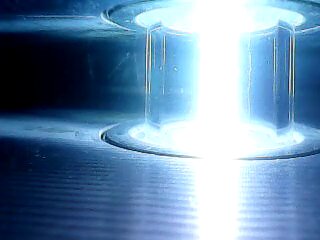Research group Plasmant finds the way of producing oxygen, fuel and the basis of fertilizer on Mars.
A team of chemists discovered that Marsatmosphere can serve to convert CO2 into oxygen and CO as well as to turn nitrogen into a good basis for fertilizer. "The speed and energy efficiency of the conversion in particular have never been achieved before, and can have important implications for humanity," says Prof. dr. Dr. Annemie Bogaerts (Uantwerpen).
Marsatmosphere consists largely of CO2, with a small fraction (2%) nitrogen. This composition now shows that it is possible to achieve oxygen and the basis for fertilizer, even at the same time. The conversion of CO2 and nitrogen is done in a self -built plasmaractor.
Plasmatechnologie
In addition to fixed, liquid and gaseous, plasma is the fourth aggregation state. This state arises when gas molecules split into loaded particles through the addition of energy (eg electricity). Plasma is therefore a (partially) ionized gas, which contains both electrons and ions (= charged particles) and molecules. This makes it possible to split CO2 and nitrogen and convert it into new molecules, even at room temperature, which is not possible in normal circumstances."In our plasmaractor, the conversion to new molecules is possible with an energy input of 1 kWh," says Prof. Bogaerts. "You can compare this with the amount of energy that a microwave oven of 1000 W consumes when he gets up for an hour." The same energy input is currently being used in the "Mars Oxygen in-Situ Resource Utilization Experiment", better known as Moxie. This experiment is being carried out by the National Aeronautics and Space Administration (NASA) on board their perseverance-robber. The project has The aim is to demonstrate that future spacemen can make oxygen from the Marsatmosphere to breathe.

A plasmaractor splits gas molecules into reactive particles, after which these particles collide with each other and form new products.
To explain the underlying mechanisms, the Plasmant researchers have also simulated the experiments via the computer. This shows, among other things, that O and O2, formed by CO2 dissociation, facilitates the oxidation of the stitching fraction in the Marsatmosphere and thus contributes to the formation of NOx, which forms the basis for fertilizer. Oxygen can also be removed from Marsatmosphere in this way.
"The plasma is generated by introducing electrical energy into a reactor," explains Bogaerts. “In practice it means that we all make small lightning bolts in our reactor. Those lightning bolts split the gas molecules, such as CO2 and nitrogen, first into very reactive particles, after which these particles collide with each other and form new products. ”
Record tempo
The speed with which the conversion processes happen is impressive. For the conversion of CO2 into oxygen, for example, this was 47 g/h, which is about 30 times higher than the value currently achieved by Moxie (1.6 g/h). Moreover, the corresponding energy costs are approximately 10 times lower than in the Moxie experiment. Plasmechnology therefore clearly competes with the existing method for obtaining oxygen (and also fuel) from CO2.

Plasmechnology is an impressive number of times faster and more energy-efficient in converting CO2 into oxygen and fuel for future Mars exploration.
Furthermore, the researchers showed the possibility of NOX production for the very first time, which forms the basis of fertilizer. They were able to convert 7% of the N2 group that is present in the Mars atmosphere. Moreover, this plasma method is very flexible, with an instant start-up time, and therefore compatible with the fluctuating and non-continuous MarsSolar electricity.
In short, this study by Plasmant shows the great potential of plasm technology, whereby the conversions effectively happen on the planet Mars.
Exploration of red planet
The local atmosphere on Mars appears to be very useful for producing oxygen, fuel and fertilizer. With the help of research financing from the European Space Agency, the Plasmant researchers will continue to build on their promising results. For example, they want to check whether linking the plasma process to gas separation technology can cause pure gas flows to oxygen, CO and NOx, which are necessary for lifestination and transport during future robot or even human exploration of the red planet.